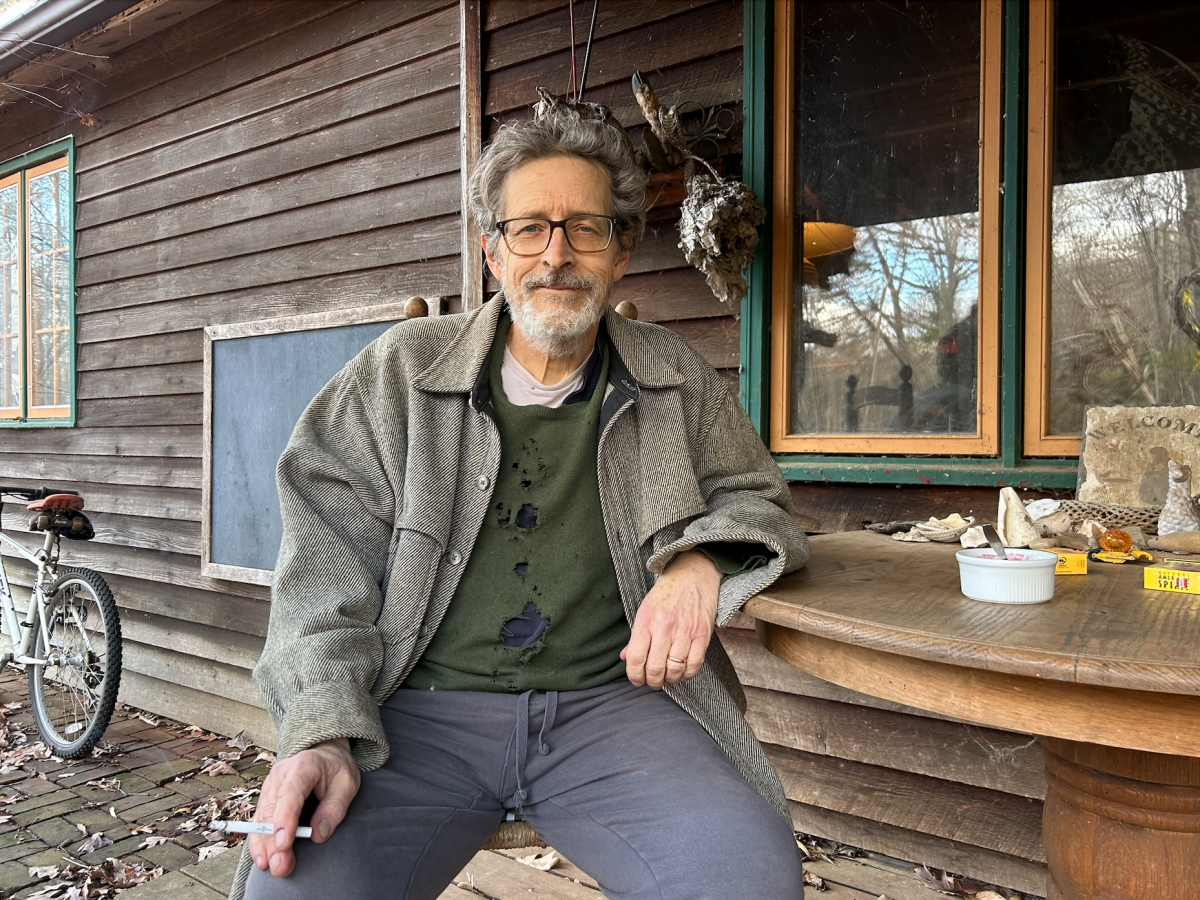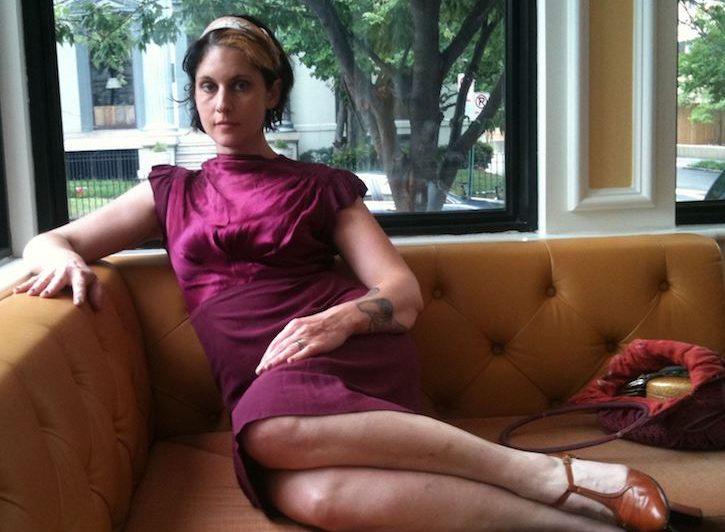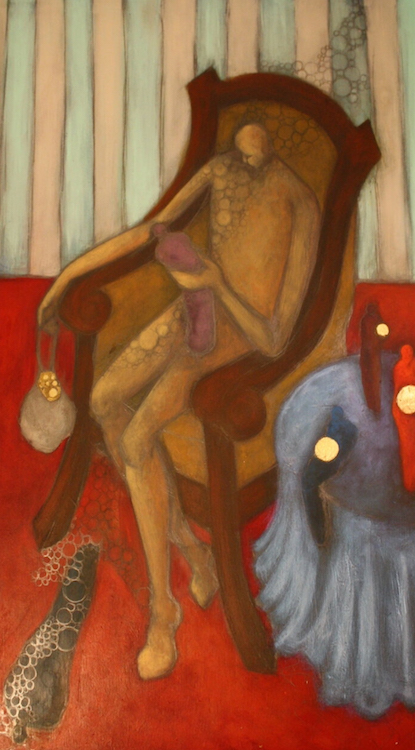In the years leading up to the pandemic, artist Nym Pedersen could often be found on the Downtown Mall, peddling his small paintings, drawings, and collages, which he dubbed “art snacks.” Much like Steve Keene, Nym felt that art should be within everyone’s reach and priced his work accordingly. Nym died on March 9 at the age of 64 after a brief bout with cancer.
Nym came to Charlottesville in 1997 from Portland, Oregon, to join his sister, theater maven Boomie Pedersen. Nym (his nickname a combination of Norman and “him,” thanks to Boomie) grew up in New York City, where he attended the Collegiate School and Columbia University. The Pedersens lived on Central Park West just across the street from the park that became their playground and sanctuary.
It was not an easy childhood. The Pedersens’ father was the director of education at the Whitney Museum of American Art. Heeding the 1960s’ call to “Turn on, tune in, and drop out,” he abandoned his young family for points west, creating years of financial insecurity for those he left behind.
The burden created feelings of low self-worth; in Nym’s case, they helped mold him into someone who was self-effacing and introverted. The trauma showed up in his work, where he expressed the angst of the abandoned child. “I think my brother painted to resolve his relationship with our father,” says Boomie. “That’s where he worked out the torments going on inside him.” This is not to say Nym’s was an unhappy existence. In addition to his family, he had a close circle of friends he valued and who cherished him.
Remarkably prolific, Nym focused on the human form and, in particular, faces. Some of these, generally his pen-and-ink works, are delicate figures in repose, while others, paintings or collage, are grotesques with wild eyes and scar-like grimaces. Nym could also be scathingly funny and much of his art occupies the same absurdist world as Paul Klee’s work.
Nym took studio classes at Columbia and The Art Students League of New York and worked in different media—drawing, painting, collaging, sculpting. Drawn to collage for its ability to suggest layers of meaning, in some works he assembled bits of paper narratively to create startling portraits and in others he employed it as a visual device to provide texture and spatial ambiguity. In several pieces, he even mimicked the effect of collage with paint.
In addition to his artistic practice, which remained a constant throughout his life, Nym worked as a copy editor for McGraw Hill in New York. In Charlottesville, he was employed at Harvest Moon Catering and also as a relief copy editor at C-VILLE Weekly.
Through his marriage to Allegra von Studnitz, whom he adored, Nym became a devoted stepfather and step-grandfather to her biological daughter, two adopted sons, and grandson. The couple would go on to adopt two more boys, and Nym loved being a father and living a pastoral existence in the country surrounded by a large and varied menagerie.
It was this happiness that helped resolve his demons. Allegra describes the sea change: “Some years back Nym reached a breaking point. He felt deep despair about life, his past, the art world,” she says. “He made the decision that his outlook on life would become an introspection on life. He became the kindest, most loving human being, filled with humility. … And with that, he departed.”



